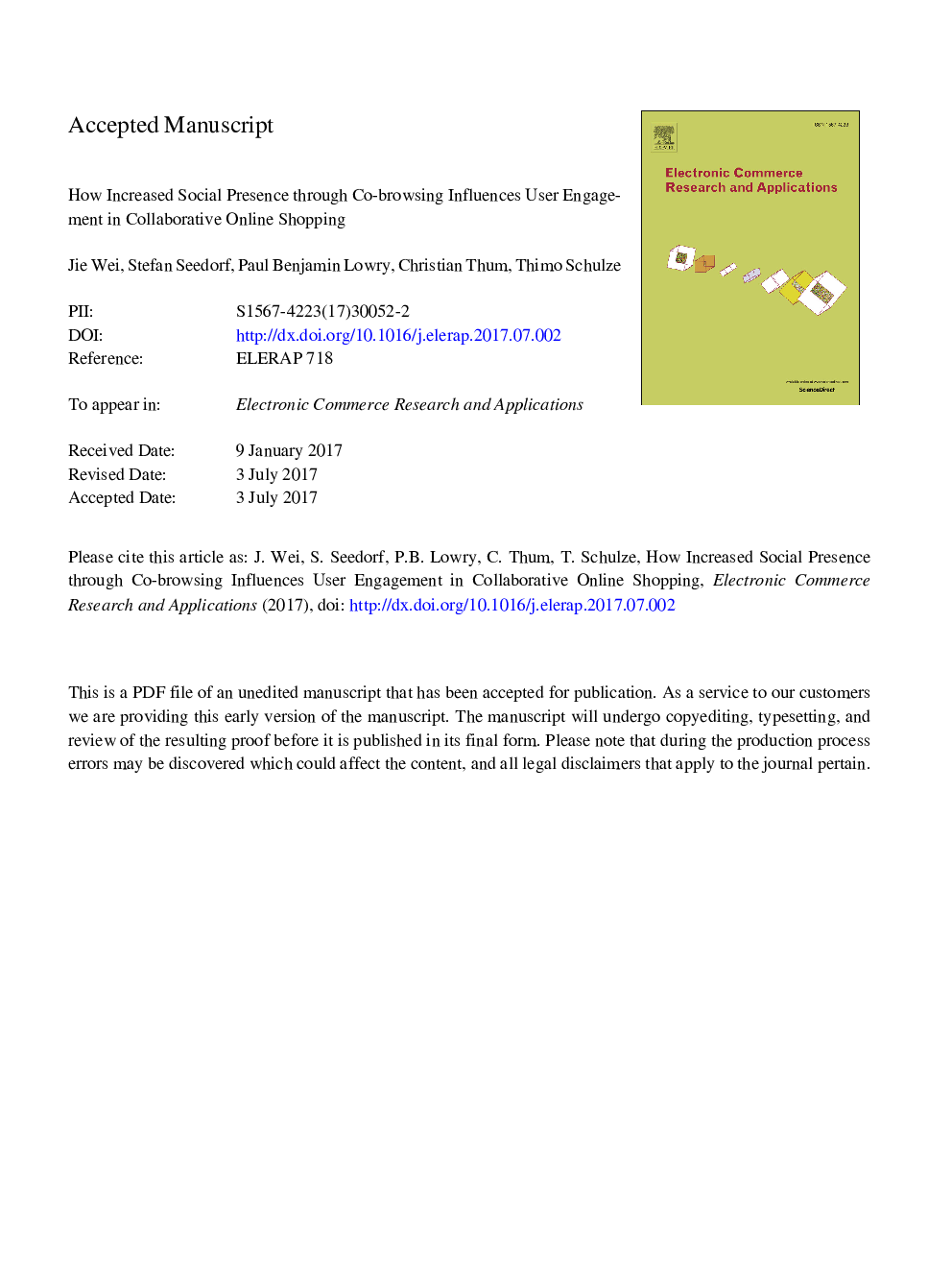| Article ID | Journal | Published Year | Pages | File Type |
|---|---|---|---|---|
| 4942514 | Electronic Commerce Research and Applications | 2017 | 53 Pages |
Abstract
Traditional online shopping has been a solitary activity, but technology advances are challenging this norm. Collaborative online shopping (i.e., co-shopping) stimulates more purchases than solo shopping does, and it embraces the innate human need to socialize. Thus, it represents a growing form of ecommerce and therefore draws increasing interest from researchers and practitioners. The most recent advancement in co-shopping is the emergence of social co-browsing that enables two or more users to share the same view in a browser in real time. Most existing studies on co-shopping have focused on factors that influence purchasing online, but they have not considered co-browsing. In this paper, we use social presence and engagement theories to explain the roles of co-presence and engagement in increasing endurability for co-shoppers. We tested our model with a free-simulation experiment on 234 consumers on Mechanical Turk, randomized to three conditions of co-presence. Their task involved co-browsing (except for the control condition) on an e-commerce website to shop for Apple products. To invoke the co-browsing IT artifacts, we used Synchronite as a backend to create a queue in which participants were paired in dyads. According to our results, users who perceived greater psychological presence of another shopper were significantly more engaged in the online shopping activity. In particular, co-presence in co-browsing fostered a more rewarding experience than in the chat-only condition. Finally, we outline our contributions to research and practice and discuss the limitations of this work that open up new research opportunities.
Keywords
Related Topics
Physical Sciences and Engineering
Computer Science
Artificial Intelligence
Authors
Jie Wei, Stefan Seedorf, Paul Benjamin Lowry, Christian Thum, Thimo Schulze,
